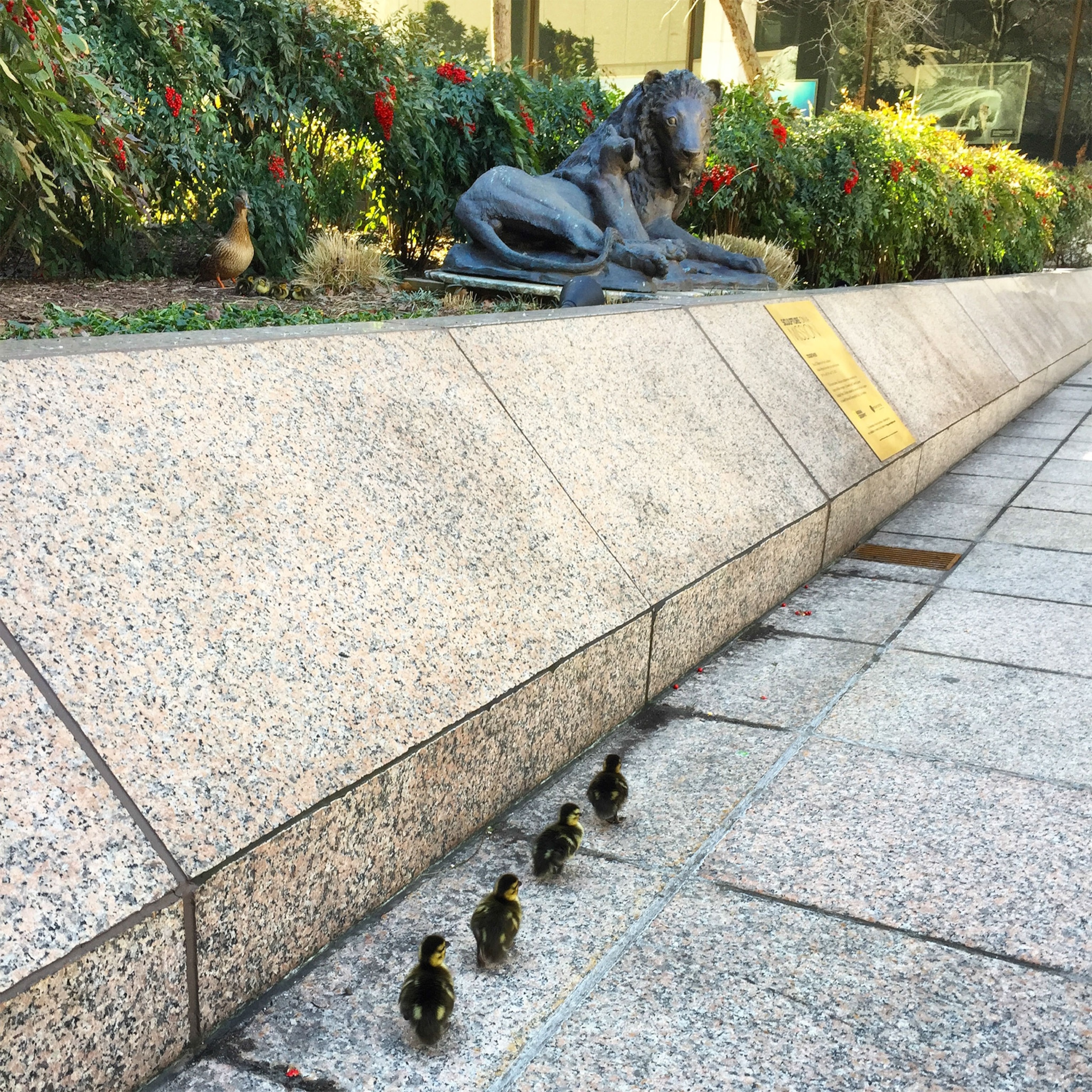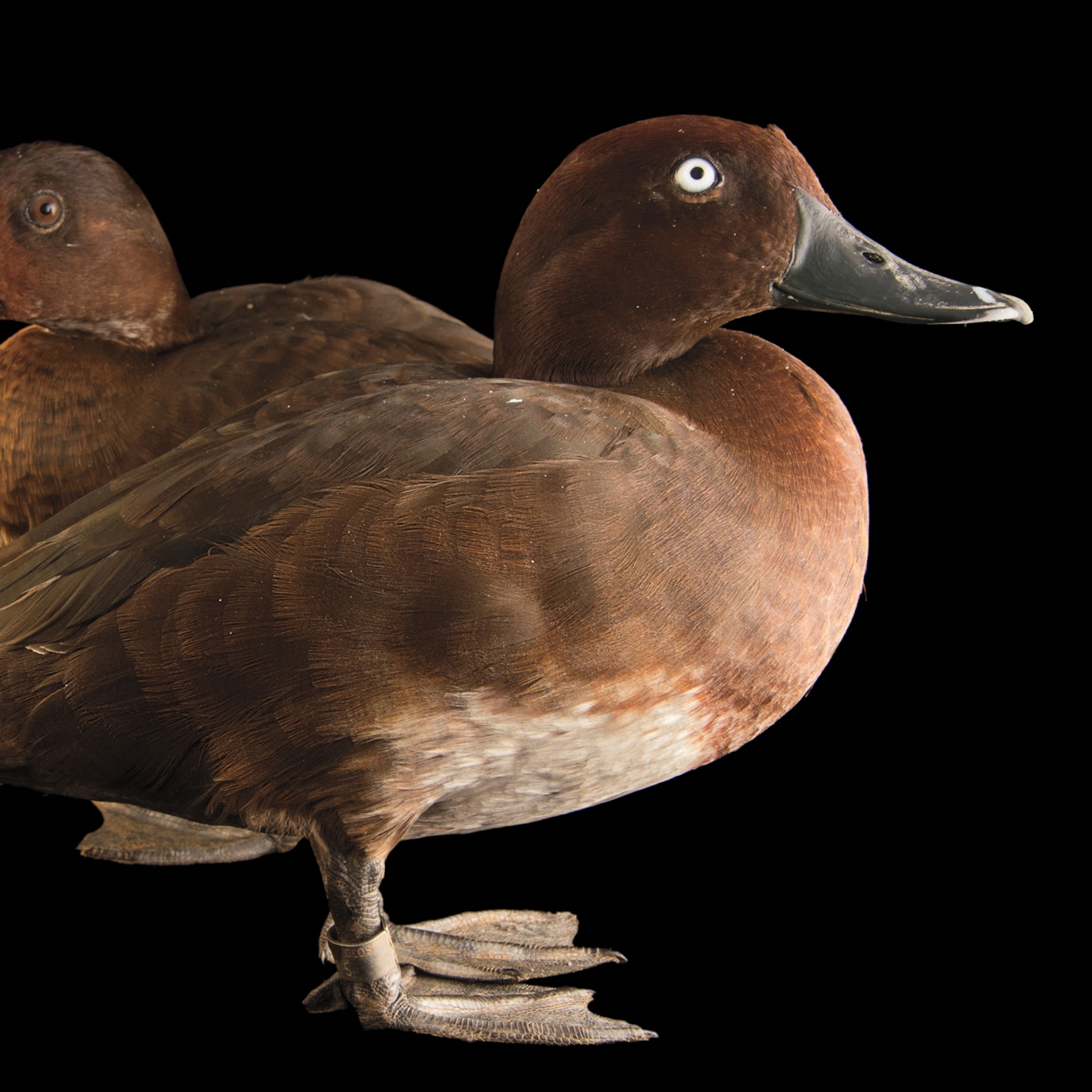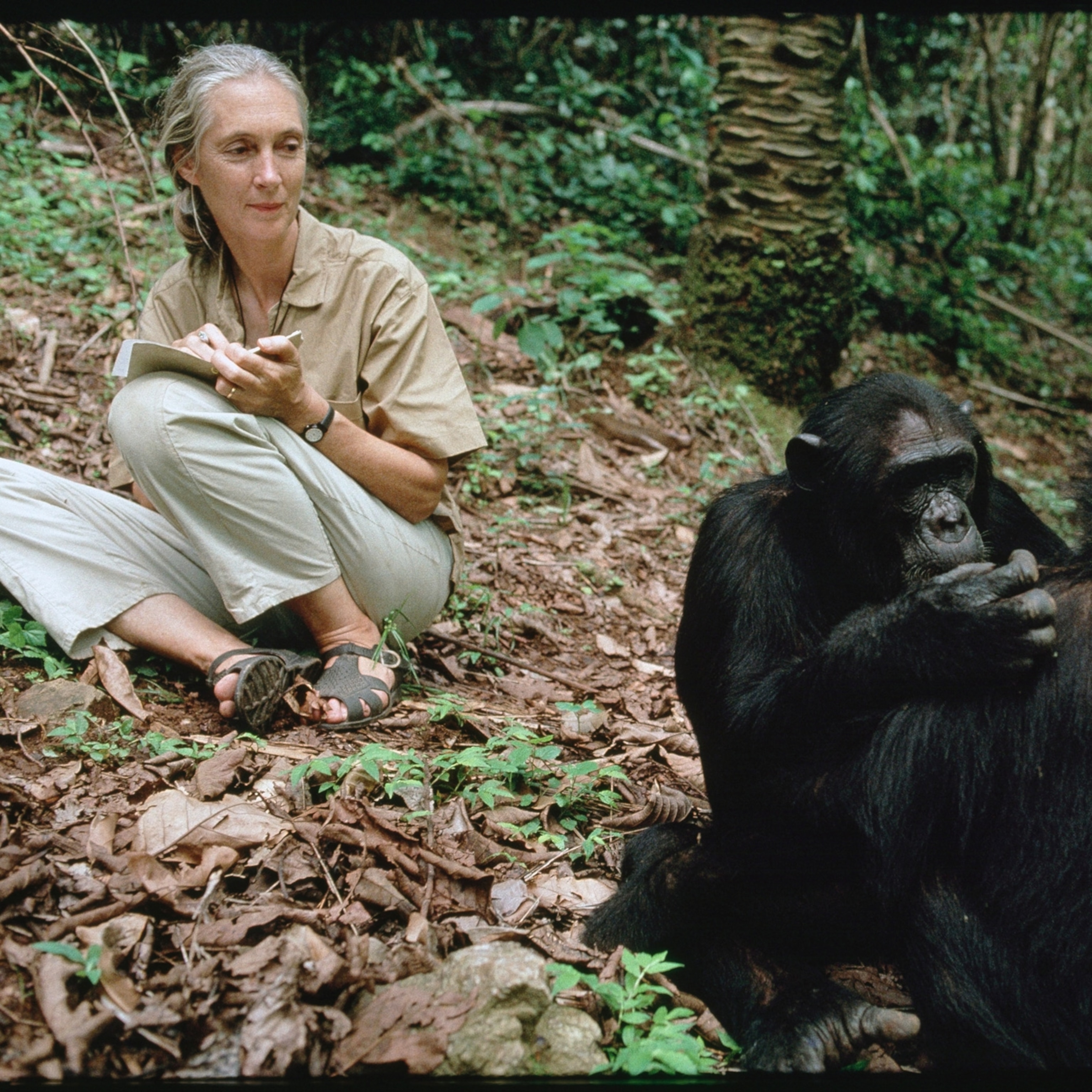
National Geographic’s Ducks Are Having a Tough Winter
The fate of a group of ducklings nesting on our doorstep may be tied to much larger issues.
A few months after we devoted an entire issue to looking at how animals and ecosystems are responding to a changing planet, National Geographic has come face to face with this very issue, in our own backyard.
Since at least 2004, a pair of mallard ducks (possibly the same ducks, possibly new ducks each year) has settled in our office courtyard during the winter. This year, the female duck hatched 11 ducklings and began parading them around our campus. Normally this would be a cause for over-the-top social media cuteness. But there was a problem … it was February 11.
Mallard ducklings in the eastern U.S. typically begin to hatch in mid-March, when the weather gets warmer. Such early hatching is unusual and dangerous, and there was little that could be done to protect them. The cause of this early gestation is difficult to pin down, and hard data on the occurrence is scant; but biologists and wildlife experts say Washington, D.C.’s uncommonly warm winter may have been to blame, and our typically cold February could be a problem for the baby ducks.
Crying Fowl
Under the guidance of local urban wildlife rehabilitation facility City Wildlife, National Geographic staffers scrambled to provide food and water for the ducklings and their mother. In anticipation of plunging temperatures, one magazine editor even dashed out to buy a heating pad and put it in a makeshift cardboard-box shelter.
Dan Rauch, Washington's Fisheries and Wildlife Biologist says he’s never seen ducklings hatch before early March. City Wildlife president Anne Lewis says this was one of only four pre-March mallard duckling hatchings she’s heard of in the city. The other three were all within the last year. For ducks, early hatching presents several problems.
"In a normal situation, [a mother duck] can walk her ducklings as far as a mile to a preselected water source," Lewis says. This happens in spring, when "there's starting to be algae and aquatic vegetation in the pond,” she adds. “Whereas now, you might find a little algae, but you're not going to find much of anything else for them to eat."
Winter's food scarcity is particularly challenging for ducks because they’re hatched self-sufficient, fully feathered, and able to walk on their own; they aren’t nursed or fed by their mother.
Lewis believes the early gestation period was the result of Washington's beyond-unseasonably warm December. It was 11.5 degrees F (6.4 degrees C) warmer than the average December in the city, driven by an abnormally strong El Niño and changes in the jet stream, both of which are thought to be linked to global climate change. Lewis says the warm temperatures may have "fooled" the ducks into thinking it was already spring.
But Rauch says it’s a “messy” prospect to try and suss out exactly what’s going on.
For one thing, hormones and daylight changes are typically even greater factors than temperature in starting the avian breeding season. For another, it would be difficult to infer a clear, widespread pattern from the recent cases of early duck gestation in D.C. Determining whether the issue extends beyond a handful of ducks to include the entire duck population or a wider array of birds would require years, even decades of data collection.
What Can We Do?
Regardless of the reason for the early hatching, the Nat Geo ducklings likely did not survive for long. They haven’t been seen since Tuesday, February 16, after a weekend of bone-chilling cold. The parents are still in the courtyard, and Lewis says it is very unlikely that a mother duck would leave her babies for any period of time in the first few weeks after their hatching.
It’s not clear what could’ve been done for the ducklings. U.S. Fish and Wildlife Service regulations prohibit rescuing birds that aren’t demonstrably sick or injured. It’s also illegal to tamper with a bird's nest once eggs have been laid. The best course of action, according to Lewis, would be to keep animals like these ducks from breeding early by chasing them off at signs of nesting. This, however, requires a vigilance that does not seem altogether sustainable.

"You can't sit out there 24/7 watching duck behavior," says Lewis. "They're very determined. Also, you don't see them a lot of times until it's too late. By the time you see her on her nest, she's usually got eggs and it's too late to do anything." (Learn more about the birds right in your own backyard with National Geographic’s Backyard Bird Identifier).
Still, there may yet be hope that the babies are alive, but hidden. "If these mallards were able to keep those eggs at a temperature enough to hatch them, [the mother] can probably keep those ducklings warm enough for them to survive," Rauch says. "These guys are walking insulators." As for access to food, that will come down to water sources staying unfrozen and the area having enough warm days to get plant buds and insects to emerge in time to stave off starvation.
If this group of ducklings didn't make it, the duck and drake may well already be gearing up to try again, as a female duck can lay up to three clutches of eggs each nesting season. Though ducklings are likely to thrive in spring, when food is plentiful, they’re going to have to watch out for at least one nuisance: hawks.
Follow Natasha Daly on Twitter.








